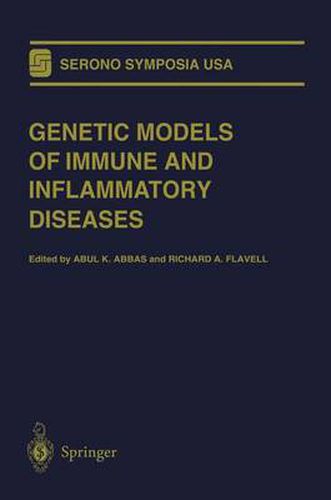Readings Newsletter
Become a Readings Member to make your shopping experience even easier.
Sign in or sign up for free!
You’re not far away from qualifying for FREE standard shipping within Australia
You’ve qualified for FREE standard shipping within Australia
The cart is loading…






This title is printed to order. This book may have been self-published. If so, we cannot guarantee the quality of the content. In the main most books will have gone through the editing process however some may not. We therefore suggest that you be aware of this before ordering this book. If in doubt check either the author or publisher’s details as we are unable to accept any returns unless they are faulty. Please contact us if you have any questions.
This book contains the proceedings of the Serono Symposia USA interna tional symposium on Genetic Models of Immune and Inflammatory Dis eases held on October 20 to 23, 1994, in Savannah, Georgia. The advent of methods for introducing genes into the germlines of mice, and for targeted disruption of particular genes by homologous recombination, has provided scientists in many disciplines with an extraordinarily powerful set of analyti cal tools. Some of the most informative applications of transgenic and gene knockout technology have been in studies of lymphocyte development and activation. The goal of this symposium was to bring together investigators using these genetic approaches for analyzing the immune system, with a view to defining common themes and novel directions. Transgenic mice have a wide variety of important applications in immu nology. Defined proteins can be expressed in selected tissues throughout development, thus acquiring the essential characteristic of self antigens. Such models have been used to study how immune responses to these artificially created self antigens are controlled. Antigen receptors of lym phocytes have been expressed as transgenes, and because lymphocytes are endowed with the unique property of allelic exclusion, such transgenic mice become essentially monospecific. Immunomodulatory agents have been expressed in defined tissues or throughout the body, providing tools for studying the functional consequences of dysregulated expression of biologi cal response modifiers.
$9.00 standard shipping within Australia
FREE standard shipping within Australia for orders over $100.00
Express & International shipping calculated at checkout
This title is printed to order. This book may have been self-published. If so, we cannot guarantee the quality of the content. In the main most books will have gone through the editing process however some may not. We therefore suggest that you be aware of this before ordering this book. If in doubt check either the author or publisher’s details as we are unable to accept any returns unless they are faulty. Please contact us if you have any questions.
This book contains the proceedings of the Serono Symposia USA interna tional symposium on Genetic Models of Immune and Inflammatory Dis eases held on October 20 to 23, 1994, in Savannah, Georgia. The advent of methods for introducing genes into the germlines of mice, and for targeted disruption of particular genes by homologous recombination, has provided scientists in many disciplines with an extraordinarily powerful set of analyti cal tools. Some of the most informative applications of transgenic and gene knockout technology have been in studies of lymphocyte development and activation. The goal of this symposium was to bring together investigators using these genetic approaches for analyzing the immune system, with a view to defining common themes and novel directions. Transgenic mice have a wide variety of important applications in immu nology. Defined proteins can be expressed in selected tissues throughout development, thus acquiring the essential characteristic of self antigens. Such models have been used to study how immune responses to these artificially created self antigens are controlled. Antigen receptors of lym phocytes have been expressed as transgenes, and because lymphocytes are endowed with the unique property of allelic exclusion, such transgenic mice become essentially monospecific. Immunomodulatory agents have been expressed in defined tissues or throughout the body, providing tools for studying the functional consequences of dysregulated expression of biologi cal response modifiers.